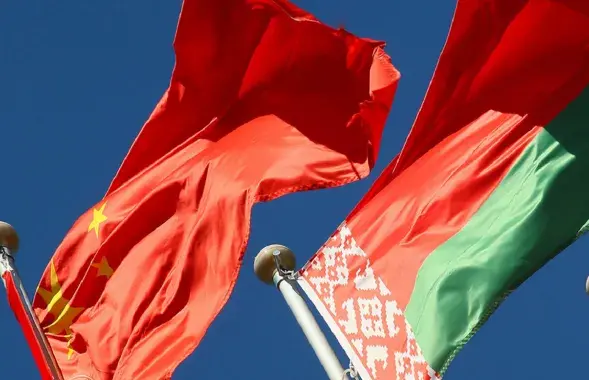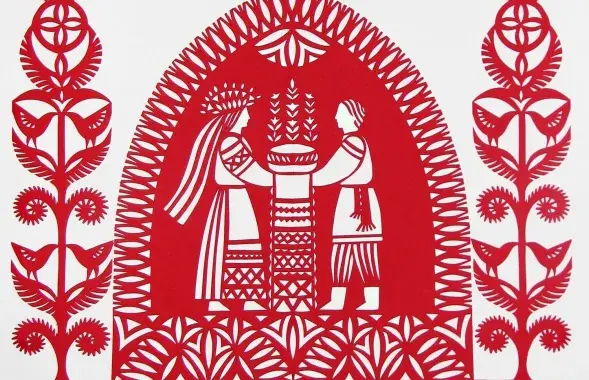Controversy around Belarusian national flag explained
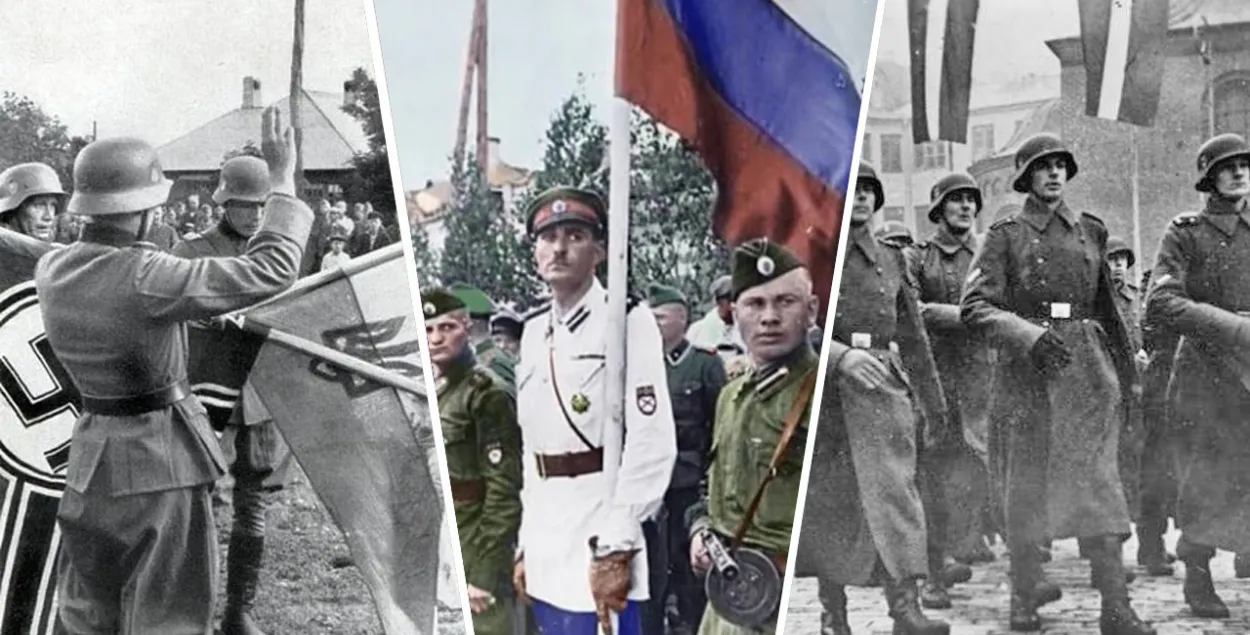
During the occupation, national flags were used not only in Belarus
Belarusian state propaganda is trying with all its might to discredit the white-red-white flag as "the banner of collaborators". Their main argument is that under these flags "Nazis were greeted" and its history "knows no good". Sometimes it is explicitly referred to as a fascist symbol, as Viktar Marozau, a prosecutor in the Homel region, recently did.
But in fact "cooperation with Germany" during World War II "stained" not only the Belarusian flag, but also the national flags of many other countries. Euroradio has selected the main facts about the use of national symbols by "collaborators" in order to give a complete picture to state TV propagandist who forget to mention it.
Red-green flag drawn by a man who made portraits of Nazis?
The red-green flag of the Belarusian SSR was approved in 1951. The authorship is attributed to Mikhail or Mikalai Huseu. There is no clarity among historians: there were either two artists with the same names at that time, or Mikalai turned into Mikhail in the 1990s.
Mikalai Huseu is a well-known artist: he decorated books before the war and worked at the university after it. But his biography also has cooperation with the Nazis -- during the occupation, he drew portraits of the Germans. There is no such information about Mikhail Huseu. However, there is not much information about an artist with such a first and last name anyway. Thus, there is no certainty that these are two different people.
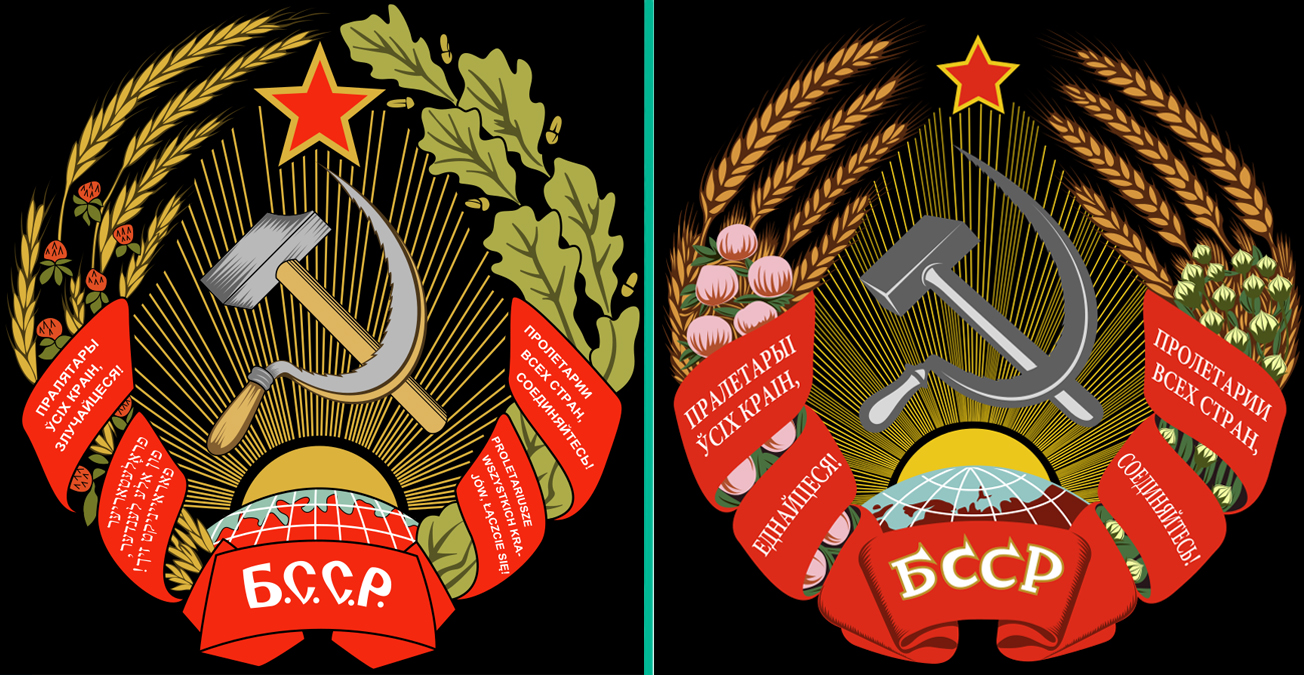
Valyantsin Volkau, the author of the BSSR coat of arms of 1926 and 1938, which is a prototype of the current coat of arms of Belarus, has an ambiguous biography. During the occupation he was in Minsk and, as contemporaries claimed, also painted portraits of Germans and organized exhibitions. "Filtration" bypassed him, and he soon created a large-scale painting "Minsk. July 3, 1944."
But his daughters were not so lucky: after a denunciation report that they collaborated with the Germans, both were exiled to Siberia.
The Russian Tricolor in the Service of the SS
The modern Russian flag was used by a number of collaborationist movements in the RSFSR. Among them were the Russian Liberation Army ("Vlasovtsy"), the Russland Division, and the Russian Guard Corps.
However, the Germans soon forbade the use of the tricolor thinking that the flag, introduced by Peter the Great, symbolized Russian imperialism. But other paraphernalia, such as arm bands, were still made in white, blue and red. The Andreyev Cross, which is used today on the flag of the Russian Navy, was widely used by collaborators.
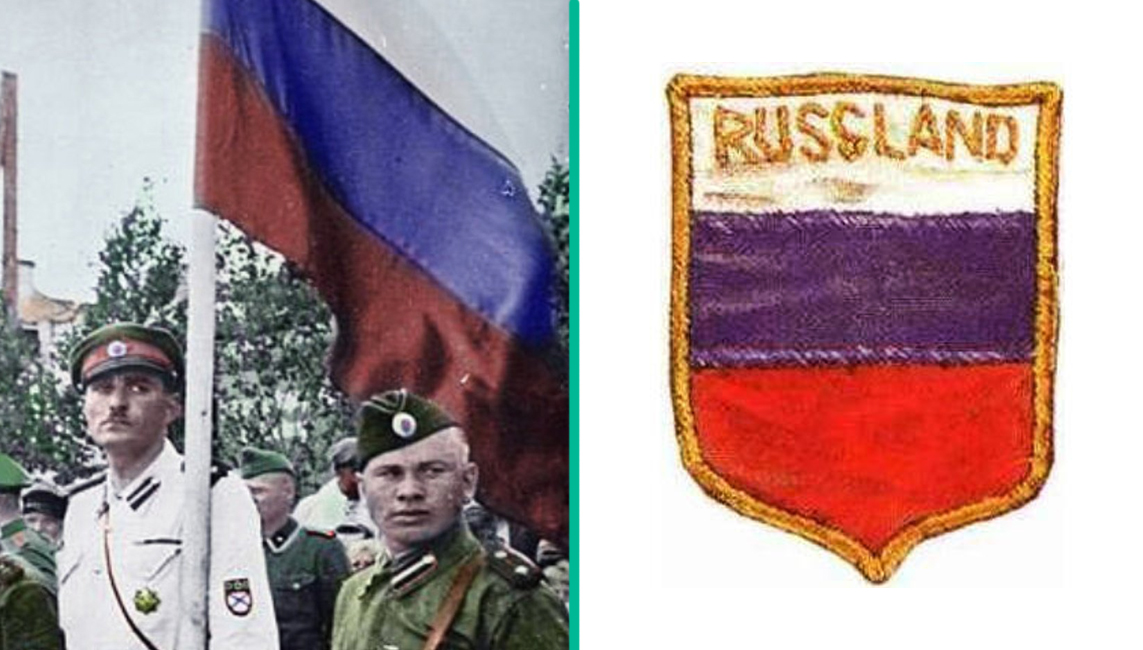
"People usually say to this that the Russian tricolor was also used by traitors. However, this comparison is incorrect. The white-blue-red flag appeared at the end of the 17th century, not 24 years before the war. The WRW flag only has to do with betrayal and seeking "help" from foreign powers. Several centuries of history are associated with the Russian tricolor," a Russian propaganda site wrote trying to justify its use. But this doesn't sound very convincing: who cares how many years of history are behind the flag?
In 1991, the tricolor was returned to the status of the national flag of Russia, and this did not cause any particular controversy. Today the "fascist past" of this flag is only mentioned by a small group of fringe groups who are nostalgic for the Soviet Union.
Armenia and Azerbaijan: emblems of Wehrmacht soldiers
The German government seems to have encouraged the use of national symbols in the occupied territories. In the case of Azerbaijan and Armenia those were the flags adopted by the self-proclaimed republics in 1918. So the story here is the same as with the white-red-white flag.
The Armenian Legion of the Wehrmacht used emblems with a red-blue-orange flag. Today it is used as the official flag of Armenia. The same situation is with the symbols of the Azerbaijani Legion: the blue-red-green cloth with a crescent moon gained official status after the collapse of the Soviet Union.
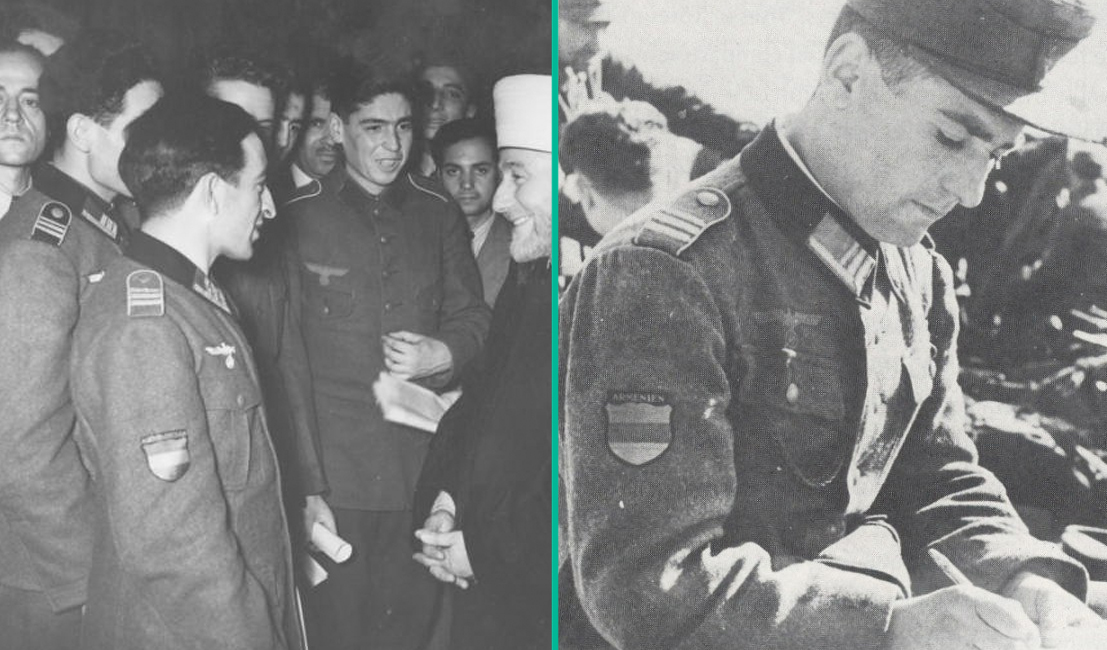
Interestingly, in May Azerbaijan and Armenia joined a propaganda war and actively accused each other of glorification of fascism and cooperation with the Nazis. The colors of the symbols were also used in the argument.
Lithuania and Latvia: the flag as a symbol of independence from the Soviet Union
Russian propaganda likes to focus on the "fascist" past of the Lithuanians and Latvians. One of the arguments is flags again. Although we remember that even the modern Russian flag was used by those who collaborated with the Germans.
The modern Lithuanian flag, created, like the Belarusian WRW flag, in 1918, was indeed used for this purpose. For example, it was used by the Lithuanian Provisional Government, created in 1941. The Latvian flag is slightly older: in its modern form it appeared in the 19th century. It was also used by Latvian collaborators - rather as a national flag.
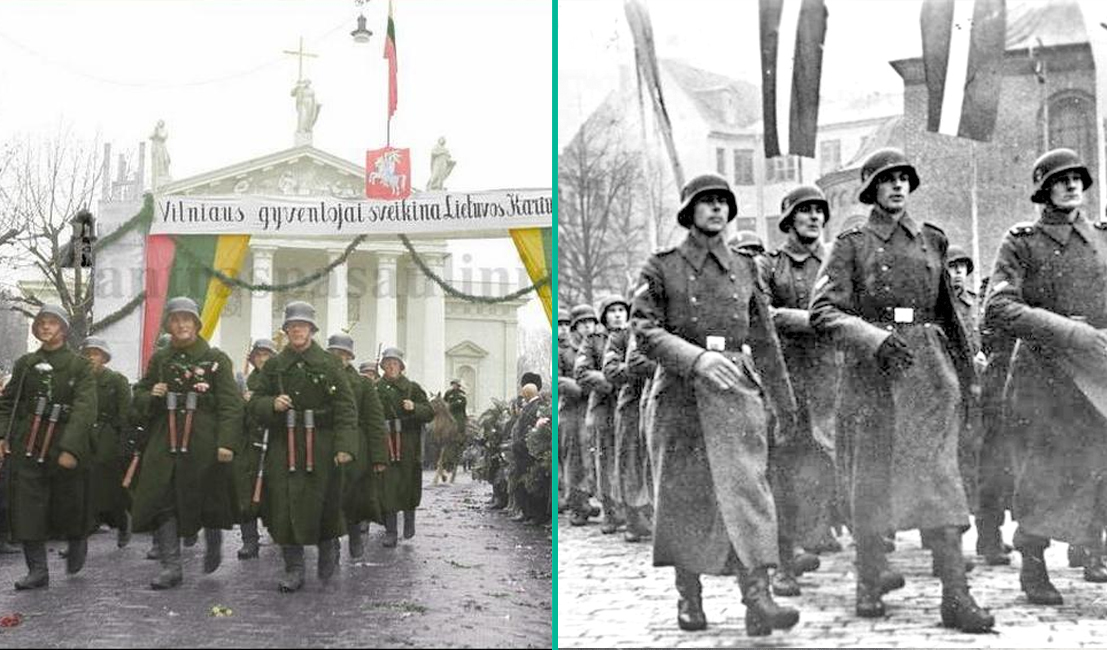
For both Lithuania and Latvia the use of national flags was especially important: they were forcibly annexed to the USSR during World War II, in 1940. They failed to gain independence in the mid-20th century, but the flags were returned after the collapse of the Soviet Union.
Who else: Ukraine, Croatia, and the Caucasus countries
Most of the local organizations that collaborated with the Nazis and fought primarily for the independence of their countries used their own symbols. So the flags of Ukraine, Croatia and several other countries were used. Sometimes it was a collective image, which is still used today. For example, the green-red flag was used by the North Caucasus legion of the Wehrmacht. The same combination of colors is found today on the flags of Chechnya and Tatarstan.
The governments and citizens of Norway, France, Great Britain, Denmark and other countries cooperated with the Germans under their national flags. But for some reason, nowhere in the world flags for such a page in history are used as an argument to shame people. In Belarus, the authorities are going to adopt a separate law against the glorification of Nazism.
What's wrong with WRW flag?
The white-red-white flag is accused of exactly what the citizens of many other states live with quite calmly. That said, the reasoning is sometimes quite ridiculous.
"Sometimes they say that Germans and collaborators used national flags in other countries as well. But history is different there," Vadzim Hihin, dean and one of the main mouthpieces of "correct history" tried to explain in late November. "We must understand what the attitude of the population to the white-red-white flag was. Before the war the population had never really seen this flag".
The arguments of the state propaganda usually boil down to photos from official events during the occupation, where the white-red-white flag is present. But, it must be said, the "population" did not "see" the WRW flag not only before the war, but also during the war. Many historians believe that contrary to popular opinion, the collaborators and German attack brigades didn't burn villages under the WRW flag, but it was used by a small group of activists, who asked Germans to create an independent Belarusian state.
Similarly, modern flags were not widespread among Armenians, Azerbaijanis, and some other nations.
"The author of the white-red-white flag himself, Klawdziy Duzh-Dushewski, who lived in Kaunas at that time, did not participate in the collaborative organizations and during the occupation he saved Jews from extermination by hiding them in his apartment. Some of the activists were shot by the Gestapo," said historian Uladzimir Lyakhouski.


